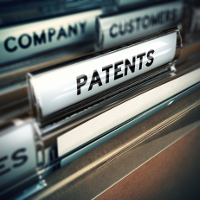The following guest post from Robert R. Sachs, Partner at Fenwick & West LLP, first appeared on the Bilski Blog, and it is reposted here with permission.
By Robert R. Sachs
 In late July, the USPTO issued its July 2015 Update to the 2014 Interim Section 101 Patent Eligibility Guidance (IEG). The July 2015 Update addresses a number of the issues and concerns raised in the public comments to the IEG and is supposed to assist examiners in applying the 2014 IEG during the patent examination process. The July 2015 Update also includes a new set of examples of claims involving abstract ideas and sample analysis under the Mayo framework. The USPTO is seeking public comments on the July 2015 Update, and comments are due on October 28, 2015, via email at 2014_interim_guidance@uspto.gov.
In late July, the USPTO issued its July 2015 Update to the 2014 Interim Section 101 Patent Eligibility Guidance (IEG). The July 2015 Update addresses a number of the issues and concerns raised in the public comments to the IEG and is supposed to assist examiners in applying the 2014 IEG during the patent examination process. The July 2015 Update also includes a new set of examples of claims involving abstract ideas and sample analysis under the Mayo framework. The USPTO is seeking public comments on the July 2015 Update, and comments are due on October 28, 2015, via email at 2014_interim_guidance@uspto.gov.
Here is an overview of what I think are the key issues and concerns with the July 2015 Update. Feel free to use any of my analysis in your comments to the USPTO.
1. Requirements of Prima Facie Case and the Role of Evidence
A significant number of the public comments on the 2014 IEG noted that examiners have the burden to make the prima facie case that a patent claim is ineligible, and that the Administrative Procedures Act (APA) and Federal Circuit case law requires that this determination be made based on “substantial evidence,” and not examiner opinion. In particular, all of the public comments that addressed this issue stated that examiners should have to provide documentary evidence to support a conclusion that a claim is directed to a judicial exception or that claim limitations are well understood, routine, and conventional.
In the July 2015 Update, the USPTO responded by stating that whether a claim is ineligible is a question of law and courts do not rely on evidence to establish that a claim is directed to a judicial exception, and therefore examiners likewise do not need to rely on any evidence that a particular concept is abstract, or a fundamental economic concept, or even a law of nature. The USPTO’s reliance on the judicial model is legally incorrect. First, examiners are bound by the APA and judges are not. Second, that eligibility is a question of law does not mean that there are not factual issues, as well—it merely determines whether the court or a jury is to make the finding. Obviousness is likewise a question of law, but there are clearly factual issues involved. Third, when judges take judicial notice, they are making a finding of fact, and they must do so under the requirements of Federal Rules of Evidence, Rule 201, which states that “The court may judicially notice a fact that is not subject to reasonable dispute because it: … can be accurately and readily determined from sources whose accuracy cannot reasonably be questioned.” This requirement is similar to the requirements of Official Notice set forth in MPEP 2144.03: “Official notice unsupported by documentary evidence should only be taken by the examiner where the facts asserted to be well-known, or to be common knowledge in the art are capable of instant and unquestionable demonstration as being well-known.” Thus, by its own logic, examiners should comply with the requirements of MPEP 2144.03.
As to the role of evidence, again the public comments that discussed this issue all took the position that examiners must cite authoritative documentary evidence, such as textbooks or similar publications to support a conclusion that a claim recites a judicial exception or that certain practices are well known, conventional or routine. The public comments on this issue all made the same argument: that the Supreme Court in Bilski and Alice cited references in support of their conclusions that the claims were ineligible.
In response to this uniform opinion, the USPTO maintained its position that citations of references was not necessary because the references in Bilski and Alice were technically not “evidence” since the Court is an appellate court, and further that the references were not necessarily prior art. This argument misses the point. Regardless of whether the references were evidence under the Federal Rules of Evidence, the Court felt it necessary and proper to cite them. Further, the Court did not cite references as prior art or suggest that they need to be prior art—rather, the Court cited the references as an authoritative basis to show that the claims were directed to longstanding, well-known concepts. That the Court did this not once, but twice, is strong guidance that the USPTO should follow suit.
Similarly, examiners should be instructed to accept and give substantial weight to documentary evidence submitted by applicants rebutting the examiner’s conclusions under either Step 2A or 2B of the Mayo framework. This includes declarations from the inventor or others showing that particular limitations are not considered judicial exceptions by a person of ordinary skill in the relevant technical or scientific community, or that claims limitations would be considered “significantly more” by such person, or that the claim limitations provide improvements to the art.
2. The Role of Preemption in the Mayo Framework
The majority of public comments stated that preemption is the core concern underlying the judicial exceptions to Section 101, and that the examiner should be required to establish that a claim preempts a judicial exception in order to find the claim ineligible. The USPTO again took an opposing view to this consensus interpretation, asserting that questions of preemption are inherently addressed in the two-part Mayo test. The USPTO also stated that “while a preemptive claim may be ineligible, the absence of complete preemption does not guarantee that a claim is eligible.” This has effectively eliminated arguments made by applicants that their claims were patent eligible because they did not preempt other practical applications of the judicial exception. Neither the Supreme Court nor the Federal Circuit has endorsed the concept that preemption does not matter given the Mayo framework. Instead, the courts continue to evaluate patent claims with respect to preemption even after the Mayo framework has been applied.
More significantly, the USPTO’s argument fails to address the more likely situation: that a claim blocks (preempts) only a narrow range of applications or implementations of the identified judicial exception. This is not merely a case of an absence of complete preemption; it is the absence of any significant degree of preemption at all. The Supreme Court recognized that preemption is a matter of degree and held that a claim is ineligible where there is a disproportionate risk that the judicial exception is fully preempted. In Alice, the Court stated:
The former [claims on fundamental building blocks] “would risk disproportionately tying up the use of the underlying” ideas, and are therefore ineligible for patent protection. The latter [claims with limitations that provide practical applications] pose no comparable risk of pre-emption, and therefore remain eligible for the monopoly granted under our patent laws.” 134 S.Ct. at 2354 (emphasis added).
Since by definition a claim must preempt something, it is only where the scope of the claim covers the full scope of the judicial exception that the claim is rendered ineligible. Judge Lourie, whose explanation of the Mayo framework in CLS v. Alice was directly adopted by the Supreme Court, put it this way:
Rather, the animating concern is that claims should not be coextensive with a natural law, natural phenomenon, or abstract idea; a patent-eligible claim must include one or more substantive limitations that, in the words of the Supreme Court, add “significantly more” to the basic principle, with the result that the claim covers significantly less. See Mayo 132 S. Ct. at 1294. Thus, broad claims do not necessarily raise § 101 preemption concerns, and seemingly narrower claims are not necessarily exempt. What matters is whether a claim threatens to subsume the full scope of a fundamental concept, and when those concerns arise, we must look for meaningful limitations that prevent the claim as a whole from covering the concept’s every practical application.
Thus, both the Supreme Court and the Federal Circuit use preemption as the mechanism to evaluate whether a claim is eligible or not by applying it on both sides of the question: ineligible if preemptive, eligible if not preemptive. In addition, over 100 district court decisions since Alice have expressly considered whether the claims preempt, even after applying the Mayo framework. If the Mayo framework inherently addressed the preemption issue as the USPTO asserts, there would be no reason for the courts to address it. Finally, by removing preemption from the Mayo framework, the USPTO has turned the framework into the sole test for patent eligibility—directly contrary to the Supreme Court’s holding in Bilski that there is no one sole test for eligibility.
Lourie’s statement that a claim is patent eligible when it includes “substantive limitations…with the result that the claim covers significantly less” than the judicial exception provides a simple and expedient basis for using preemption as part of the streamlined analysis–something the USPTO has resisted in the July 2015 Update. Examiners are well trained to evaluate the scope of a claim based on its express limitations. Accordingly, they can typically determine for the majority of claims that, whatever the claim covers, it has limitations that prevent it from covering the full scope of some judicial exception. If the point of the streamlined analysis is to avoid the unnecessary burden of the Mayo framework, then a preemption analysis provides the best way to achieve that goal.
Finally, to suggest that the Mayo framework is precise enough to be a definitive test is to ignore the obvious: both steps of the framework are undefined. See McRO, Inc. v. Sega of America,, Inc., No. 2:12-cv-10327, 2014 WL 4749601,at *5 (C.D. Cal. Sept. 22, 2014) (Wu, J.) (“[T]he two-step test may be more like a one step test evocative of Justice Stewart’s most famous phrase [‘I know it when I see it’].”). The Court refused to define the scope of abstract ideas in Alice (Step 2A), and Step 2B entails evaluating the subjective requirement of “significantly more” or “enough.” What is left, then, is analysis by analogy and example—and both common sense and life experience tell us that these approaches very often lead to mistakes. Analogies can be good or bad, and most examples can be argued either way. Preemption serves as a way of evaluating whether the outcome from such analysis is consistent with the underlying rationale for the judicial exceptions in the first place.
3. Abstract Ideas Must be Prevalent and Longstanding in the Relevant Community
The majority of public comments on the IEG argued that to establish that an idea is abstract, an examiner must show that the idea is “fundamental” in the sense of being “long-standing” and “prevalent,” following the statements of the Supreme Court. Various commentators suggested specific rules for examiners, such as evidence that the idea has been known and used in practice for a period of 25 or more years. Even those who supported a restrictive view of patent eligibility suggested that examiner should look to “basic textbooks” to identify abstract ideas.
The USPTO responded in the July 2015 Update by asserting that abstract ideas need not be prevalent and longstanding to be fundamental, arguing that even novel abstract ideas are ineligible: “examiners should keep in mind that judicial exceptions need not be old or long‐prevalent, and that even newly discovered judicial exceptions are still exceptions.” The USPTO stated that ”The term ’fundamental‘ is used in the sense of being foundational or basic.” This analysis begs the question. An idea is foundational or basic because it is widely accepted and adopted in the relevant community—it is fundamental to the practices of the community. Indeed, any textbook on the “foundations” of a particular scientific field would explain the principles and concepts that are long-standing and widely-accepted by scientists in that field. It would not be a significant burden on the examiner to cite to such publications to support a finding under Step 2A. Indeed, the inability of an examiner to do so would be strong evidence that a claim is not directed to a foundational or basic practice.
4. USPTO Reliance on Non-Precedential Federal Circuit Decisions
Public comments noted that the 2014 IEG included citations and discussions of non-precedential Federal Circuit cases, such as Planet Bingo, LLC v VKGS LLC, and SmartGene, Inc. v Advanced Biological Labs, and indicated that because the cases are non-precedential, they should not be cited and relied upon by the USPTO as the basis of its guidance to examiners. Further, it was pointed out that the 2014 IEG mischaracterizes the abstract ideas at issue in these cases.
For example, the USPTO characterizes SmartGene as holding that “comparing new and stored information and using rules to identify options” is an abstract idea. The Federal Circuit’s actual holding was much more specific: that “the claim at issue here involves a mental process excluded from section 101: the mental steps of comparing new and stored information and using rules to identify medical options.” The court itself unambiguously limited the scope of its decision: “[o]ur ruling is limited to the circumstances presented here, in which every step is a familiar part of the conscious process that doctors can and do perform in their heads.” Thus, the USPTO’s characterization removed key aspects of the court’s expressly-limited holding: that the comparing steps were inherently mental steps (not computer steps) performed by a doctor considering medical rules (not any type of rules) to evaluate medical options (not other types of options). The court’s ruling cannot be generalized to all types of comparisons on all types of information using all types of rules. The improper generalization of the court’s holding has resulting in examiners applying SmartGene to find many claims for computer-implemented inventions ineligible. This is because many, if not most, computer processes can be characterized as comparing stored and new information and applying a decision rule to produce a useful result. For example, most automobiles use computers and embedded software to monitor vehicle sensors and take actions. A typical fuel management computer compares a current measure of fuel (new value) with a predefined minimum amount of fuel (stored information) and determines whether to turn on a low fuel light (using rules to identify option). Under the USPTO’s characterization of SmartGene, a claim to such a process would be deemed an abstract idea, an obviously incorrect outcome.
The USPTO did not address any of the problems identified by the public comments regarding non-precedential cases. Instead, the July 2015 Update simply states that the “2014 IEG instructs examiners to refer to the body of case law precedent in order to identify abstract ideas by way of comparison to concepts already found to be abstract,” and makes multiple other references to precedent. Even so, the July 2015 Update relies repeatedly on non-precedential Federal Circuit decisions, such as Dietgoal Innovations LLC v. Bravo Media LLC, Fuzzysharp Technologies Inc. v. Intel Corporation, Federal Home Loan Mortgage Corp. aka Freddie Mac v. Graff/Ross Holdings LLP, Gametek LLC v. Zynga, Inc., Perkinelmer, Inc. v. Intema Limited, and Cyberfone Systems, LLC v. CNN Interactive Group, Inc.
The USPTO should eliminate any discussion of or reliance upon non-precedential decisions. In the alternative, the USPTO should at minimum explain to examiners that such decisions are limited to their specific facts and are not to be generalized into controlling examples or rules.
5. There is No Separate Category for Methods of Organizing Human Activity
Public comments to the 2014 IEG pointed out various issues with the category of “methods of organizing human activities” as a basis of abstract ideas, and in particular requested clarification as to which types of method would fall within the category. Here too there was a broad agreement among the commentators that the proper interpretation of Bilski and Alice: The Court found that the claims in Alice and Bilski were abstract ideas because they were directed to a fundamental economic practice, not because the claims were methods of organizing human activity. The Court noted that Bilski’s claims were methods of organizing human activity only to rebut Alice’s arguments that abstract idea must always be “fundamental truths.” The Court’s analysis does not logically imply that methods of organizing human activity are inherently abstract ideas.
The USPTO responded by broadly interpreting the scope of the category, stating that many different kinds methods of organizing human activity can also be abstract ideas, but providing no explanation (other than examples) to determine when this is the case and when is it not. The USPTO then mapped various Federal Circuit case into this category, even where the court itself did not expressly rely upon such categorization. For example, the USPTO listed buySAFE, DealerTrack, Bancorp, PlanetBingo, Gametex, and Accenture as examples of cases dealing with methods of organizing human activity. However, none of these cases actually held that the methods in suit were methods of organizing human activity. Instead, every single one of these cases held that the claims were abstract as either mental steps or fundamental economic practices. Attempting to map Federal Circuit cases into this category is both confusing to examiners and the public and unnecessary.
The USPTO should remove this category from the Guidance until such time as the Federal Circuit or the Supreme Court provides a clear definition of its bounds.
6. There is No Separate Category for “An Idea of Itself”
Public comments noted that this is catch-all category that the courts have mentioned in passing but have never provided any definition of its contours, and further suggested that the USPTO clarify that this is not a distinct category of abstract ideas.
In response, once again the USPTO broadly described the category and linked various Federal Circuit cases to it as examples, where the court itself never so characterized the invention. The USPTO lists in this category cases the court held to be ineligible in other categories, such as mental steps (Cybersource, Smartgene*, Classen*, Perkinelmer*, Ambry, Myriad CAFC*, Content Extraction); mathematical algorithms (In re Grams, Digitech); and economic activities (Ultramercial) (*indicates non-precedential decision). In fact, there is no precedential Federal Circuit or Supreme Court case that has defined “an idea of itself” as a distinct category. It is only mentioned in dicta, never in a holding.
The result of the USPTO’s categorization of cases into multiple, different undefined categories is to make it more difficult, not less, for examiners to properly determine which types of claims are within which category. Further, where an examiner asserts that a claim falls into multiple categories (which is a simple assertion to make, since most inventions deal with multiple different concepts), the applicant is forced to rebut each categorization.
7. “Mathematical Algorithms” Are Limited to Solutions to Problem in Pure Mathematics
This category, more than any other, reflects the USPTO’s failure to substantively and meaningfully analyze the issues and provide clear guidance. Public comments to the 2014 IEG provided extensive analysis of the case law and the problems arising from mathematical algorithms being considered abstract ideas. The USPTO did not respond to the substantive analysis at all. Instead, the July 2015 Update merely lists cases that have held claims invalid as mathematical algorithms, without explanation. This is inadequate for several reasons.
First, the USPTO must clarify that the presence of a mathematical algorithm in the specification or claims is not a per se indication that the claims are directed to an abstract idea. In Alice, the Court expressly stated that “[o]ne of the claims in Bilski reduced hedging to a mathematical formula, but the Court did not assign any special significance to that fact, much less the sort of talismanic significance petitioner claims.” Equally so, examiners must not assign any special significance to the presence of a mathematical formula either in the disclosure or in the claim. What matters is the underlying concept, not how it is expressed (e.g. “no special significance”), whether in words or mathematical symbols.
Second, the presence of a mathematical formula or equation does not make an invention abstract for a very simple reason: mathematics is a language that allows for the very precise and formal description of certain types of ideas. All modern engineering, including, civil, mechanical, electrical, chemical, computer, etc., as well as all of the physical sciences, relies on mathematical analysis for design and formulation. Using a mathematical equation is simply one—albeit highly precise—way of expressing concepts, which may be either patent-eligible or not. Thus, the presence of a mathematical equation does not by itself imply or suggest anything about the underlying concept, and should not be relied upon by examiners as an automatic evidence of an ineligible abstract idea. While mathematics may be used to describe abstract ideas like the laws of mathematics, it can equally be used to describe entirely mundane and non-abstract ideas like fuel-efficient aircraft approach procedures (U.S. Patent No. 8,442,707), compressing video for transmission on cell phones (U.S. Patent No 8,494,051), efficiently allocating farming resources (U.S. Patent No. 6,990,459), or calculating golf handicaps and the difficulty of golf courses (U.S. Patent No. 8,282,455).
The correct interpretation of “mathematical algorithms” as used by the Supreme Court are algorithms that are solutions to inherently mathematical problems. This was the specific definition used by the Supreme Court in Benson, and confirmed in Diehr. In Benson, the Court stated:
A procedure for solving a given type of mathematical problem is known as an “algorithm.” The procedures set forth in the present claims are of that kind; that is to say, they are a generalized formulation for programs to solve mathematical problems of converting one form of numerical representation to another.
Later, in Diehr, the Court stated that in Benson “we defined ‘algorithm’ as a ‘procedure for solving a given type of mathematical problem,” noting that “our previous decisions regarding the patentability of ’algorithms‘ are necessarily limited to the more narrow definition employed by the Court.” The Court expressly rejected a broader definition that covered any “sequence of formulas and/or algebraic/logical steps to calculate or determine a given task; processing rules.”
The USPTO should clarify that this more limited definition of mathematical algorithms is to be used. This approach beneficially distinguishes between inventions in pure mathematics—which as the Court stated are precisely those that have the disproportionate risk of preemption because they can be used in an unlimited number of different fields—from inventions in applied mathematics, the mathematics used in the engineering and physical sciences. Examiners are well-accustomed by their formal scientific and technical training to distinguish between claims to these two types of inventions making use of mathematical formulas and equations.
8. Identifying Whether a Claim Limitation Recites a Conventional, Routine, and Well-Understood Function of a Computer
The public comments to the 2014 IEG discussed the problems resulting from considering the normal operations of a computer to be merely “generic” functions that are conventional, well-understood, and routine, and therefore by definition insufficient to support eligibility of a patent claim.
In response, the USPTO again ignored the substantive arguments, instead simply stating that examiners may rely on what the courts have recognized as “well understood, routine, and conventional functions” of computers, including “performing repetitive calculations,” “receiving, processing, and storing data,” “receiving or transmitting data over a network”. The July 2015 Update goes on to state that “This listing is not meant to imply that all computer functions are well‐understood, routine and conventional.”
This caveat is hardly sufficient, since the list essentially wipes out all computing operations as they are typically claimed. Just as claims for mechanical processes use verbs and gerunds that describe well-known mechanical operations, so too do claims for computer-based inventions necessarily describe the operations of a computer: receive, transmit, store, retrieve, determine, compare, process, and so forth. There is no other way to claim the operations of a computer except to use such terminology.
Accordingly, since the Supreme Court did not hold that all software and computer-implemented inventions are per se ineligible, the proper interpretation of the Court’s discussion of the generic functions of a computer is more narrowly-focused. Specifically, it is necessary to consider the entirety of each claim limitation, not merely the gerund or verb that introduces a method step. The claim limitation as a whole must recite nothing more than generic functions. When considering computer processing steps on computer data, limitations as to the source of data, the types of data, the operations performed on the data, how the outputs is generated, where the data is stored or transmitted, must all be considered. This is because it is these limitations that distinguish between the merely generic operations (“receiving a data input and determining an output”) and the particular applications.
 By David Ward
By David Ward Last week, a group of CPIP scholars filed an
Last week, a group of CPIP scholars filed an  On December 4, 2017, CPIP Founder
On December 4, 2017, CPIP Founder  An oil well drilling rig is not an abstract idea. A method of operating an oil well drilling rig is also not an abstract idea. This proposition should be clear to all, but in
An oil well drilling rig is not an abstract idea. A method of operating an oil well drilling rig is also not an abstract idea. This proposition should be clear to all, but in  In Tuesday’s
In Tuesday’s  Last year I christened the post-Alice impact on patents #Alicestorm, riffing on the hashtag #hellastorm used to refer to the
Last year I christened the post-Alice impact on patents #Alicestorm, riffing on the hashtag #hellastorm used to refer to the